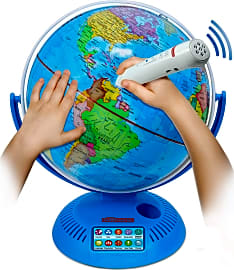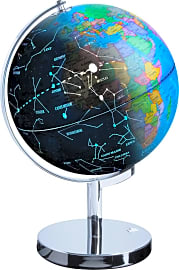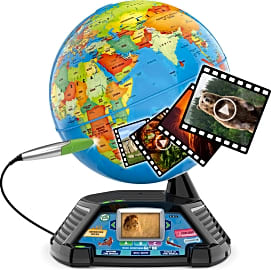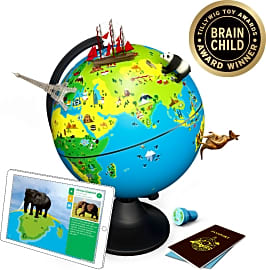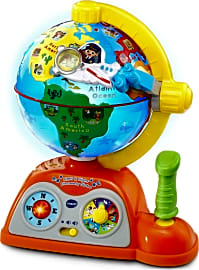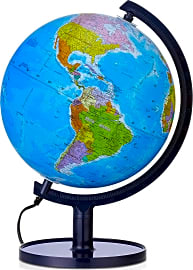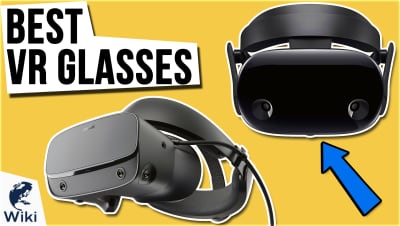The 10 Best Talking Globes

This wiki has been updated 35 times since it was first published in December of 2016. If you're looking for an interactive way to transform bland geography lessons into an experience that will spark curiosity, imagination, and love for learning about the world, consider giving one of these smart globes a try. Our selection includes a variety of talking models designed to expose kids to the wonders of cultures, history, animals, landmarks, and much more. When users buy our independently chosen editorial choices, we may earn commissions to help fund the Wiki.
Editor's Notes
November 20, 2020:
If you want a large globe that’s easy to read with plenty of visible detail, check out the Replogle 12-Inch Intelliglobe II. At 12 inches in diameter, it has the widest circumference of those on our list. Alternatively, you may be looking for a small option that is lightweight enough for your child to pick it up or transport to another location. In this case, the nine-inch wide Little Experimenter LE-2602 is a good choice, as is the similarly-sized VTech Fly and Learn.
If your child is fascinated by star patterns and astronomy, we have some great options for you. The SJ SmartGlobe transforms from day to night, substituting shining stars for landmasses. Complex constellation images, like the Archer and Scorpion, are fully drawn in so kids can spot them. The USA Toyz 3 in 1 also offers a light-up star map, featuring Orion and the whole Zodiac gang. As a bonus, these two models can also be used as nightlights.
The Fisher-Price Laugh & Learn remains on our list because it is a good choice for toddlers. Designed for ages 18 months to three years, this light-up, singing globe plants the seeds of geography 101, while focusing on colors and international greetings. Alternatively, for those with school-aged children, you’ll want something a bit more advanced. The LeapFrog Magic is intended for kids ages five to eight, and offers several games to challenge young minds. It also comes with a video screen and hours of watchable BBC material. The Shifu Orboot is another good choice for elementary-aged kids, and its quiz questions are even appropriate for preteens.
Several of the options we’ve included come with companion apps, which offer additional engagement. The Oregon Scientific Adventure AR falls into this category, utilizing an augmented reality app that allows kids to place themselves in travel photos. The Educational Insights GeoSafari Jr. also offers a fun, interactive app for tech-savvy children.
April 26, 2019:
Talking globes prove that geography doesn't have to be boring, and for bringing this subject to life, we still think the Replogle 12-Inch Intelliglobe II and the Oregon Scientific Adventure AR are fine options. The Replogle is the more expensive choice, but it has over 20,000 pieces of information programmed into it, which means plenty of learning opportunities. For those who want smartphone integration, the Oregon Scientific model is the one to consider. Note that although its app supports eight languages, the globe itself works in two, English and Spanish. We also decided to keep another app-based option, the Shifu Orboot, despite a few issues with its functionality. Specifically, the app is a little tough for kids to operate on their own, so it may be best for parents who can provide constant supervision and assistance while the toy is in use.
Geography Isn’t Our Strong Suit
Ask most of the children or adults in the United States to point out Tanzania on a map, and the odds are you’ll get a pretty funny answer.
Ask most of the children or adults in the United States to point out Tanzania on a map, and the odds are you’ll get a pretty funny answer. The sad truth is that many of those same Americans might have equal difficulty pointing out some of the states in their own country. We are, as a nation, deplorable at geography.
It doesn't have to be this way, however. Our problem with geography is mostly a problem of exposure. From an early age, we’re not required to spend much time with maps and globes, and even when we are, we’ve got 50 states to worry about on our own turf before we go figuring out where everything else is. Add to that an unshakable, almost cult-like sense of American exceptionalism, and the rest of the world map seems to fade away into obscurity.
Technology has advantages when it comes to teaching kids about the world around them, and its ability to reinforce geographical lessons is pretty good. I would argue that there’s something missing from the experience of spinning a digital globe or scrolling over a map on a tiny tablet screen, an ingredient that can make a world of difference to students learning about the Earth and its land masses.
It’s touch. What a globe offers that no computer software outside of some pretty complex virtual reality can offer, is the tactile sensation of taking the world for a spin. There’s a high probability that about half of the places I can identify on the world map I learned from playing an old game of dreams as a child. The idea was simple: spin the globe, close your eyes, and use the tip of your finger to stop the spinning sphere. When you opened your eyes, you would read the name of the city or the country on which your finger stopped, and that would be where you would live someday. It was a blast for the kids who got Tokyo or Paris, though I’m sure anyone who landed on Flint, MI or South Sudan is having a hard time right now.
What’s exciting about the globes on out list here is that they combine all the functionality of those analog models from my childhood with a litany of technological advancements, all centered on the ability for each of the units on our list to talk. With a talking globe, your kids can effortlessly combine fun and education, playing challenging and engaging games that don’t even require an adult to be present.
How To Choose The Right Talking Globe For Your Child
Choosing a talking globe from the options on our list will come down more to the particulars of your child than anything else. While many of the choices here are likely labeled for a certain age group, your knowledge of your child and his or her needs should guide you toward your decision first and foremost.
The benefit to this kind of purchase is that, if your choice turns out to be a little too complicated for them to utilize, they can still grow into it in a year or two.
For example, if your kid is technically old enough for a more advanced talking globe that he or she could potentially use as an effective study guide, then one of the fancier globes on our list might be appropriate. But, if that same child, when asked which way is north, points up at the sky, they might not be ready for an advanced model quite yet.
The opposite is also true, that if your child doesn’t meet a certain age requirement, but they have displayed an accelerated aptitude for all things geographical, then you’ll likely want to strike while the iron is hot with the most advanced globe you can find. The benefit to this kind of purchase is that, if your choice turns out to be a little too complicated for them to utilize, they can still grow into it in a year or two.
For the most part, through, the ages recommended by the manufacturer will be just right for your little one. After that, you can consider whether your child will need anything additional to keep their attention while learning. If your kid has shown early signs of ADD, or just prefers flashing lights and screens to things more tangible, look for a model with an accompanying screen, light-up parts, or a tablet connection.
A Brief History Of Globes
Mapping the world is an ongoing process. For the majority of human history, we believed that the Earth was flat. Unfortunately, there are still those who cling to this belief, though their videos and articles are often so preposterous that it can be hard to tell which of their members are serious and which are joking. The argument between so-called Flat Earthers and those who believe in a spherical planet doesn’t go very far in the scientific community today, but it remains a source of entertainment for some.
For the majority of human history, we believed that the Earth was flat.
The theory of a round Earth reaches back at least as far as the Greeks in the 4th century B.C.E., and perhaps to Pythagoras some 200 years earlier. Wherever it started, it brought with it a unique challenge for cartographers, particularly in rendering a sphere on a two-dimensional plane.
The earliest terrestrial globe of which we’re aware comes from Greece in the 3rd century B.C.E., and one must wonder whether this was an attempt to create a model of the planet or just a way to get around having to carve up a ball and fit it sensibly on a flat surface. Obviously, these globes would have lacked certain landmasses integral to our current understanding of the world, especially given our ignorance of the continent that would become North America.
As we discovered new lands, cartographers and artists brought them to life in increasingly ornate and complicated globes. This method continued into the space age, when photographs sent back from beyond our atmosphere gave us our first glimpse at the true shape, majesty, and apparent loneliness of our little planet. Of course, there are some Flat Earthers who will claim that these images were photoshopped (an ironic term for pictures taken — and supposedly doctored — some 50 years before Photoshop was invented), but we don't pay them much mind.



